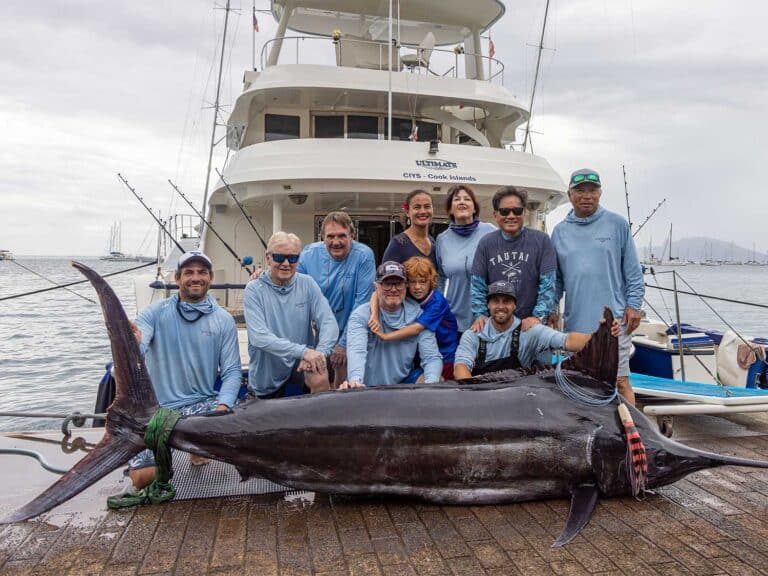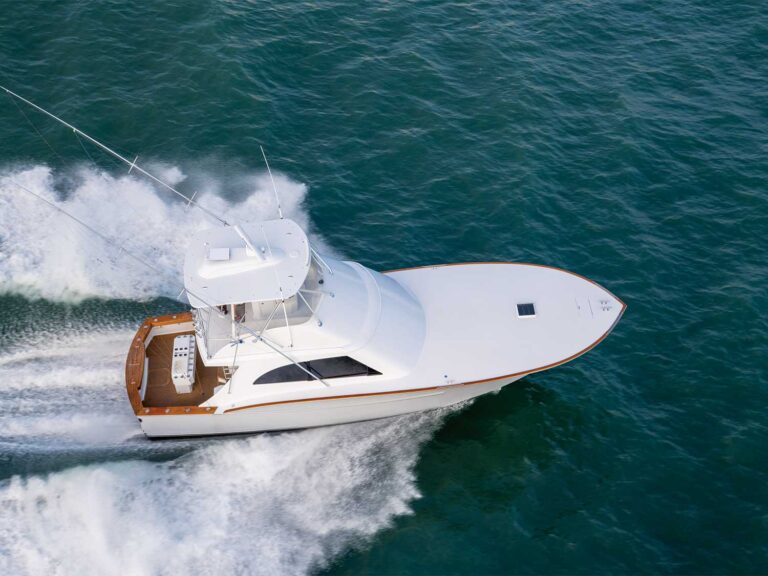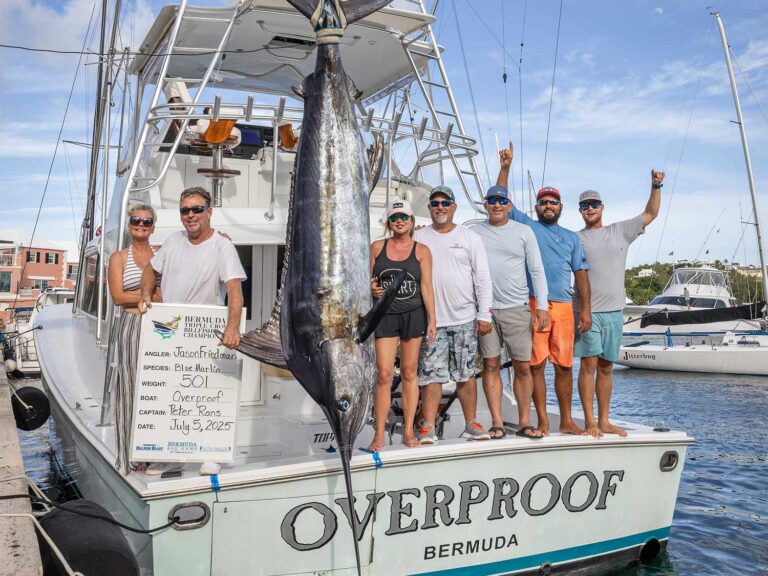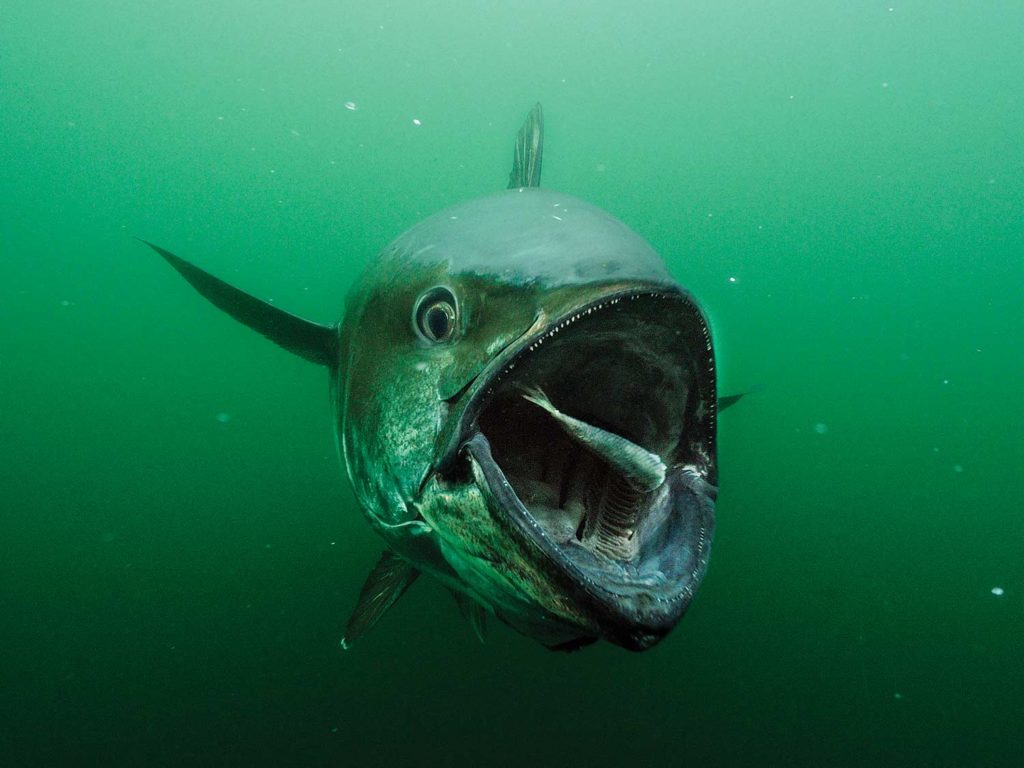
When the first European settlers arrived in Nova Scotia, Canada, from Scotland on board the ship Hector in early fall 1773, they were likely amazed at the similarities in the two landscapes. Even though they were an ocean apart by some 2,700 miles, the near-same plateaus plummeted to rocky coastlines as the green rolling hills and tree-covered highlands met them with open arms, as did the residents of Pictou.
The waters of the northwest Atlantic Ocean, Northumberland Straights in the southern Gulf of St. Lawrence, and the Gulf’s sub-basin, St. George’s Bay, were teeming with sea life. Lobsters, mackerel, herring, and ground fish such as cod and haddock were in huge supply, and while these are the fish that supported the residents’ lives, true giants were swimming among them.
Historical Prime Time
It wasn’t until the early 1930s that recreational sport fishing for giant bluefin tuna in Nova Scotia was explored. Primarily using primitive tackle and techniques compared with today’s standards, the methods were effective. When anglers from around the world caught wind of the incredible fishery, they came in droves. Both men and women took part in this quest to catch the biggest tuna ever seen, with many fish topping the coveted 1,000-pound mark. Anglers were anxious to put their skills and tackle to the ultimate test, and legendary names such as Michael Lerner and Tommy Gifford were just a couple of the many who traveled to Nova Scotia in 1935 to attempt to tame these car-size fish with rod and reel.
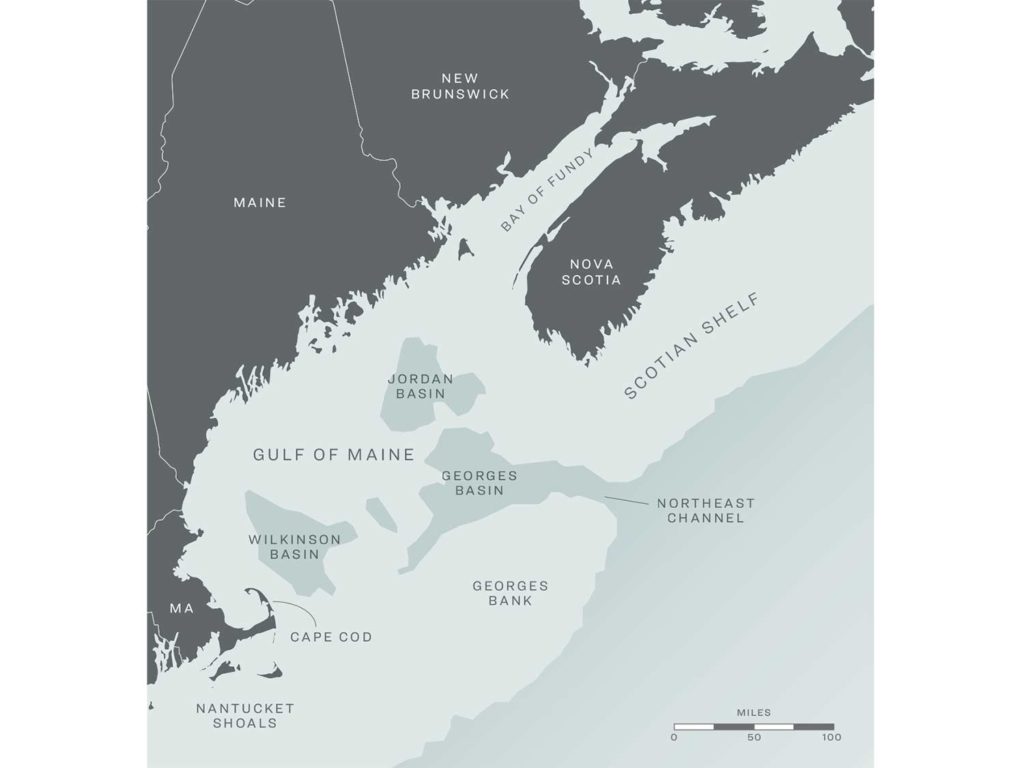
Giant tuna located in an idyllic land, with some of the nicest people in the world living there—what more could you ask for? It was nothing short of spectacular: Weigh-ins of huge fish hung on scales while spectators watched for hours in amazement likely sparked the first tuna tournaments in Nova Scotia, one of them held in the southwest rural French Acadian community of Wedgeport, which was once called the “Sport Tuna Fishing Capital of the World.” The International Tuna Cup Match was organized by S. Kip Farrington Jr., a fisherman who visited two years prior to the event’s inception in 1937. By 1939, 28 countries were having a go at Nova Scotia’s bluefins on the grounds of Tusket River and the Tuna Rip, as well as the Hell Hole, where boats would steam 12 hours for a chance to land the fish of a lifetime at the intersection of Browns and Georges banks.
While the bluefin tournament fishing in Wedgeport continued to surge, perhaps no year prior could have beat 1949′s numbers, when 72 Cup-caught bluefins totaled just over 30,000 pounds. But as the cyclical nature of fishing took its turn, the Cup was disbanded in 1979. By 2004, the tournament was revamped as the Wedgeport Tuna Tournament & Festival: a weeklong happening devised to not only bring spectators and participants to the region, but also to connect—and reconnect—the fishing community there. And in 2019, the tournament produced 14 bluefins captured by a fleet of 16, the heaviest weighed by IGFA world-record-bluefin holder Camille Jacquard on Provider VII at 684 pounds.
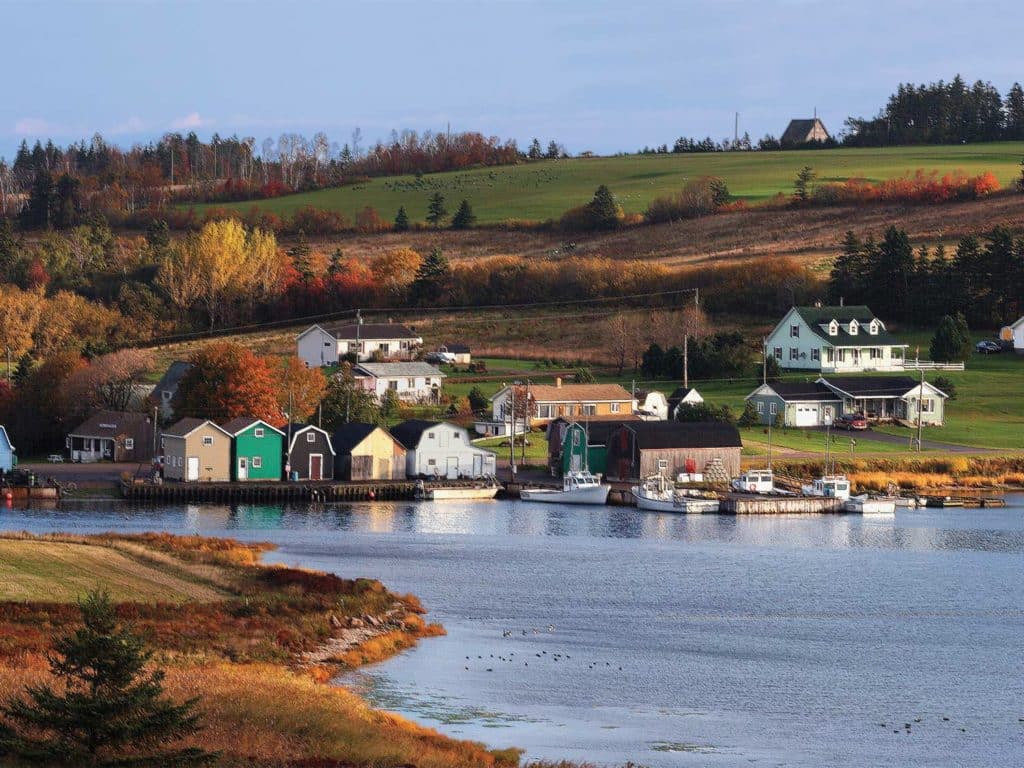
Good News Travels…Slowly
Although recreational sport fishing for these giants didn’t really get started in the Gulf of St. Lawrence or St. George’s Bay until 1967, it was Glen Gibson, a pipefitter from Nova Scotia, who likely caught the Gulf region’s first rod-and-reel bluefin in 1970. The 1,064.5-pounder, caught on November 19, was submitted to the IGFA, where it was approved, and it stood as the all-tackle record until it was retired in 1976 by none other than Camille Jacquard with an 1,129-pounder—a fish that was almost immediately replaced by an 1,191-pound bluefin landed by Leo LeCouter just nine days later.
As the decades came and went, the tackle aptly evolved, and the captains and crews became more in tune with how to successfully catch these prodigious fish. Captains from the United States brought in new techniques, along with the advent of daisy chains, spreader bars, outriggers, advanced depth-sounder technology, newly developed line types, and contemporary reels with superior drags and rod components that could better handle the daily stresses that these big fish forced on them. All of this trade growth was now utilized to put giant bluefin anglers one step closer to landing the biggest tuna to ever swim in Nova Scotian waters. People were having fun with this fresh hobby, and the bluefin fishery became a real phenomenon in sport-fishing history because of it.
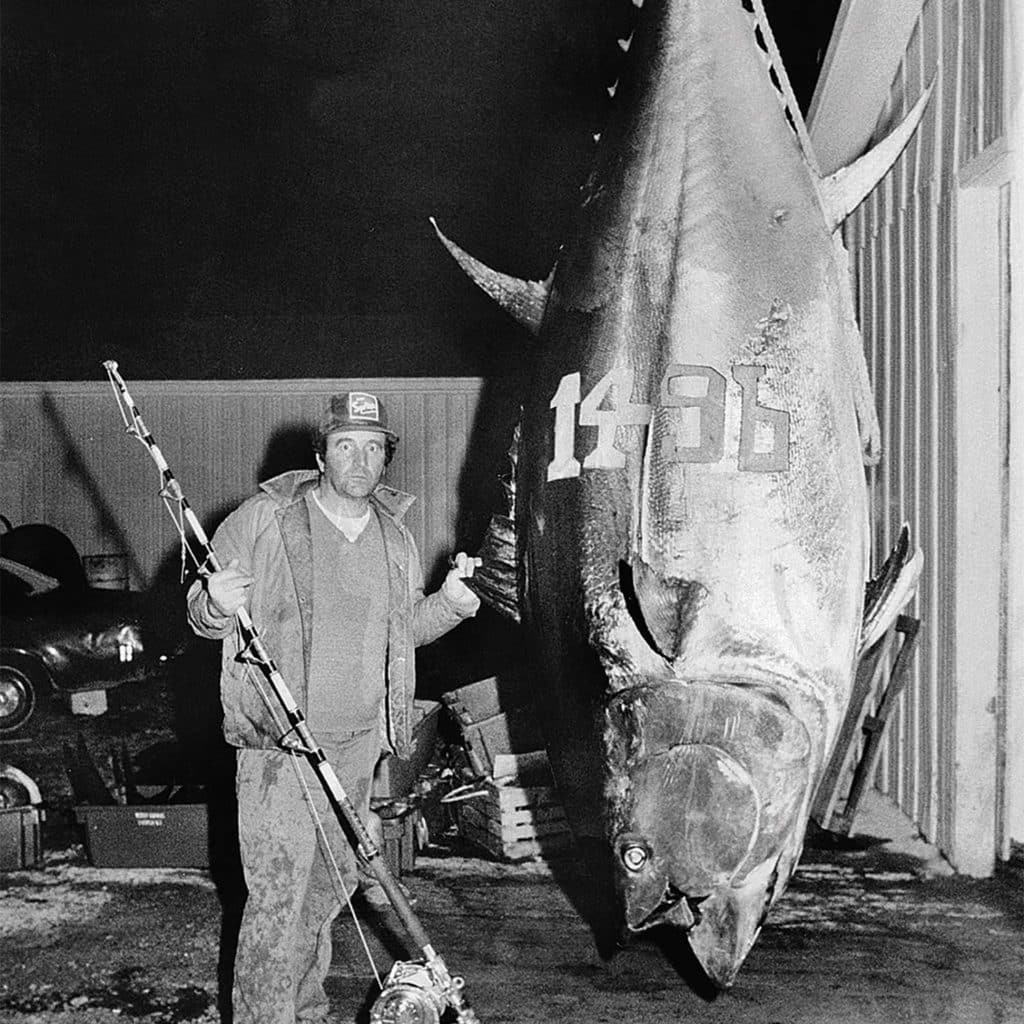
More bluefin history was made on October 26, 1979, when angler Ken Fraser was fishing with Port Hood’s Capt. Eric Samson on Lady and Misty out of the Strait of Canso’s Aulds Cove. Fraser landed the largest bluefin tuna ever taken on IGFA-rated tackle. The fish tipped the scales at 1,496 pounds and still holds the all-tackle record today, setting the bar for record anglers worldwide, and to this day, this benchmark is the one to beat.
Anglers were catching tunas hand over fist in the ’70s and ’80s; tackle-class records were being broken, then broken again, and again. This so-called tuna boom went on for years, and Nova Scotia had been put on the recreational-fishing map for another round in its fishing life. But nothing lasts forever, and just as the pendulum started to swing back toward Mother Nature’s direction, the doldrums set in.
Red Gold
From 1987 to 1995, for reasons unknown, it seemed that the tuna just stopped coming to the area. Many speculated as to why, but no one could pinpoint what exactly had happened. Perhaps the overfishing of herring and ground fish? Overfishing of mackerel? Was climate change to blame, or was it just the fact that for decades too many fish had been killed?
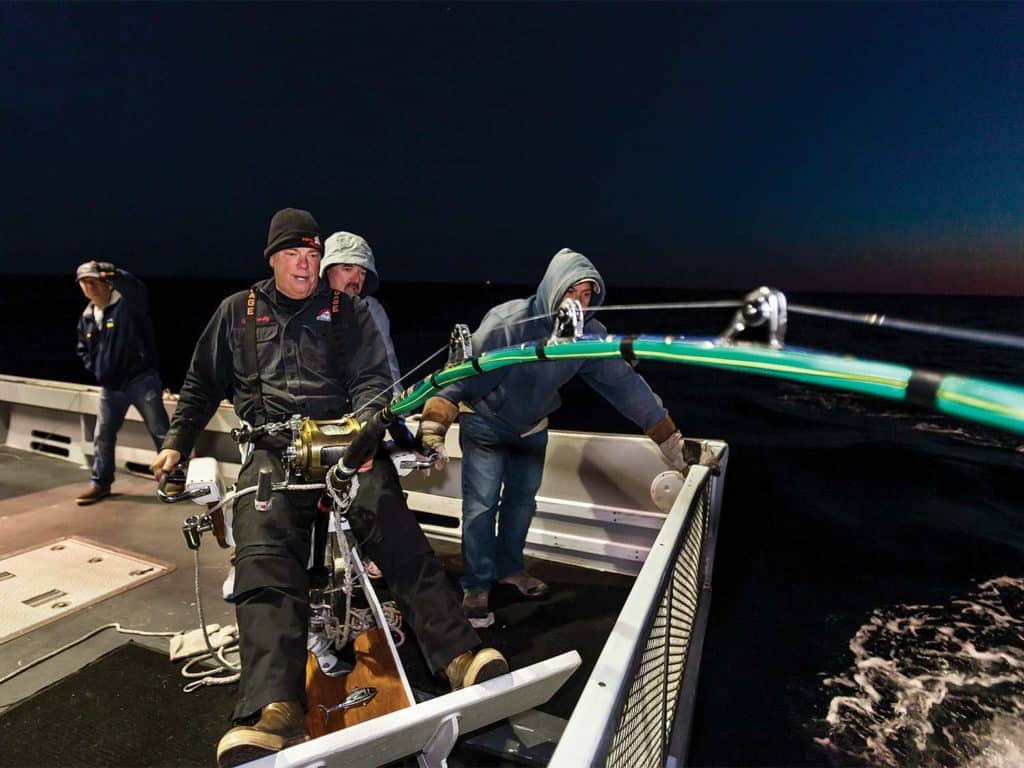
Myself and others believe that the fish didn’t leave these waters at all. We hypothesize that the slow boats, who were so accustomed to fishing close to shore, didn’t bother to explore or even change their techniques with the times. I believe the fish moved from their regular feeding grounds out to areas such as the Fisherman’s Bank, the Ridge and then to the northern end of Cape Louis—areas that are found farther from shore. Out of harm’s way, perhaps? Possibly, but nonetheless, for several years, the tuna fishery seemed to have dried up.
By 2007, Canada’s changing tuna-management standards essentially shut down recreational sport fishing after ICCAT (which Canada joined in 1974) implemented measures to reduce total allowable catch tonnage, shorten seasons, and carry out “equal distribution of quota per licensed vessel.” With no sport fishing in play, the only tuna that were being caught on rod and reel were now bycatch for those who possessed a shark permit. And then a time of change occurred, as more and more concerned citizens wondered why this part of the world was off-limits to a sport that gives so much back to a fishery.
Read Next: Build a tournament-winning team with these tips.
If fish aren’t being harvested and quotas aren’t being met, the TAC tonnage is given away to other countries so that the quota gets filled. This is what happened to Nova Scotia and is the primary reason there is such a limited quota today. Even though it seemed that the days of recreational sport fishing were gone, and the fishermen who wanted to fill their dance cards with bluefins had faded off, the tuna did return. And when they did, it was in great numbers. Now, with no charters, the local fishermen still had their commercial-tuna fishery, and money was there to be made from 1987 to 2008. The Japanese fish markets were bullish on bluefins, and buyers were traveling to Nova Scotia just to get their hands on as much of this red gold as humanly possible. The demand was in Japan, but the supply was in Nova Scotia.
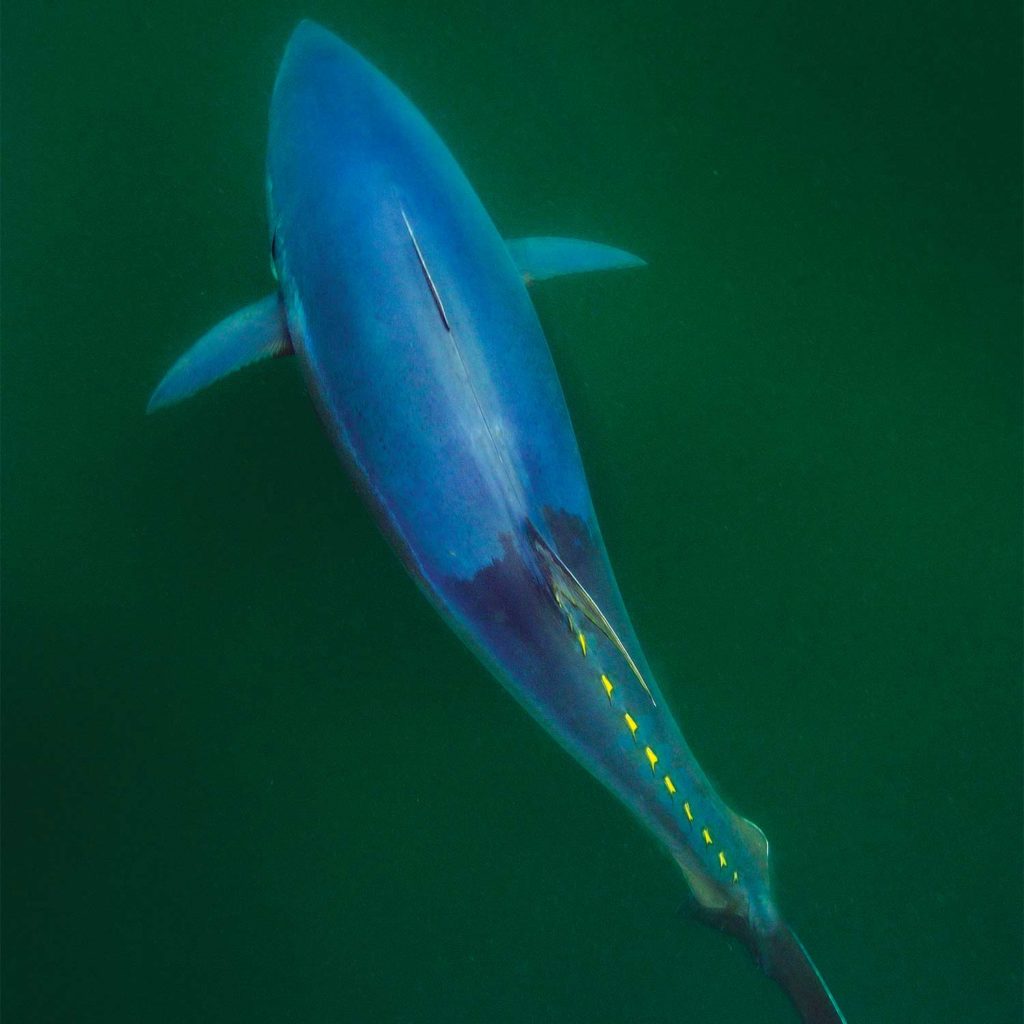
Men with briefcases full of cash were paying big money to ship bluefin tuna to Japan, and it soon became a game of dollars. Fishermen had quotas of a certain tonnage per area and province, and they were hell-bent on filling it as fast as they could. Fishermen using hand-line gear, as well as rod and reel, had only a two-day window to catch and fill two tags. If you didn’t fill your tags in those two days, you lost the unused tag. This type of derby fishing was a bit chaotic at best, but the quotas were filled quickly. In just one day, there would be 100 boats fishing the Fisherman’s Bank and 100 tunas would be landed.
With that said, you can be sure no one was looking to fill their tags with a small fish, and with only giants on their minds, the fishermen were producing tags with an average fish dress weight of 700 pounds. Monsters. One day I personally witnessed 25 fish come into Ballantynes Cove, and 18 of them were over 1,000 pounds. This is what sport-fishing anglers dream about, and the commercial tuna fishermen realized it also.
The Modern Fishery and a Look Ahead
When University of New Hampshire’s Dr. Molly Lutcavage expressed interest in studying Nova Scotia’s bluefin migratory patterns in 2004, the Department of Fisheries and Oceans agreed, but a lack of manpower to carry out the study caused the program to be delayed. In the meantime, Prince Edward Island’s commercial fleet pushed to introduce a catch-and-release fishery, realizing the positive effect that potential recreational dollars could have on their livelihoods as well as public education. Leaning on such a fishery not only would allow the fisherman to be better positioned in the economy, but to also show the minimal mortality these fish are subject to, even amid a major push from environmental groups to label bluefins as endangered and to boycott them.
In 2009, the fishing community presented a proposal to Canada’s DFO for consideration of a pilot program to reintroduce catch-and-release sport fishing to the PEI and Gulf of Nova Scotia regions. As a result, I was fortunate to be on board one of the three boats fishing out of Ballantynes Cove during that test season, and it was a huge success.
Lutcavage’s study eventually came to fruition, and ever-changing rules and guidelines—most recently in regard to main-line ratings, fight times and electronic monitoring systems—are put in place each season to protect the fishery and are aimed mostly at releasing the giants in the best condition possible. The guidelines also include spaghetti and satellite tagging when it’s safe to do so, providing great insight into the lives of these fish. But, even more importantly, the giant bluefin fishing tradition is still alive and well.
Nova Scotia is not a place to go if you are interested in catching big numbers of fish. It is but a special place—one that has a unique air about it. From the history of the settlers and the land, to the magnificent fish that anglers dream about, and to the incredible people who call this place home, the place reeks of fishing, and is so much more than just a destination for a fishing trip—it’s one that everyone needs to see before they die.
Surnames such as Boyd, MacInnis, MacGillivray, MacDougal and Gavin are just a few of the giant-bluefin charter operators who have given back so much more to this fishery, and now that it has grown into a worldwide, once-in-a-lifetime destination again, it has maintained its image as the only place to see bluefin tuna in such a hypnotic setting.
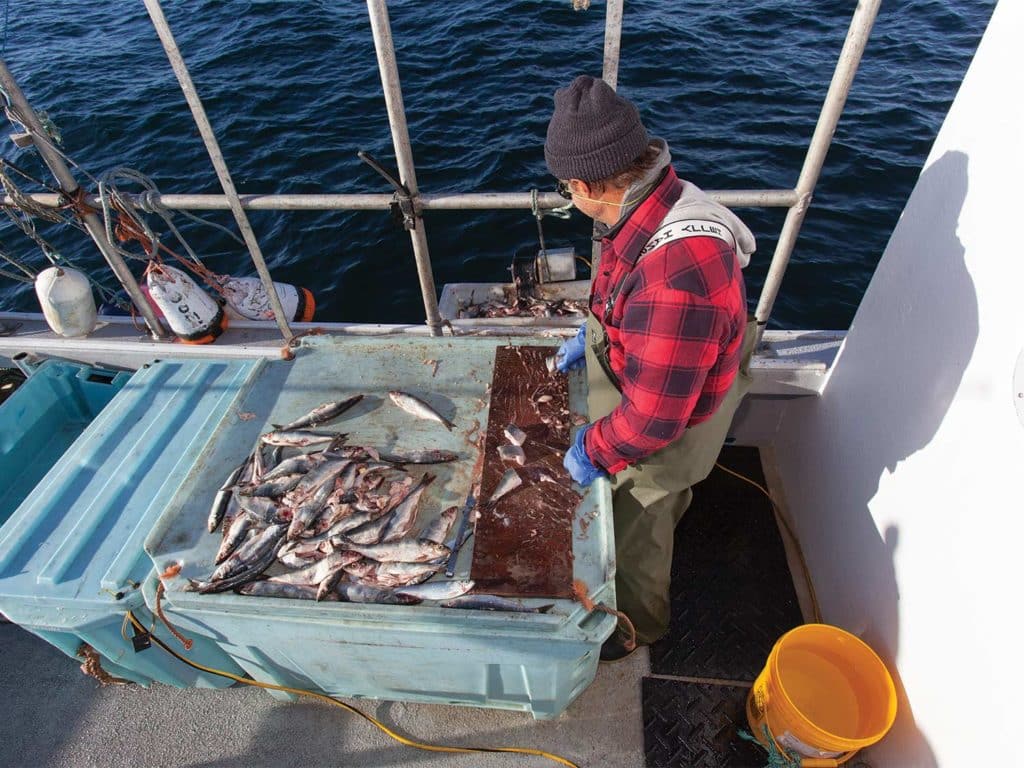
The biomass of herring and mackerel that comes here to spawn is the lifeblood of these tuna stocks. When the commercial herring fishery starts up, the tuna show up in droves. They know the sounds of the boat engines and the clanging of the chains used for net weights. It’s like ringing the dinner bell, and tuna all over the world are known to be drawn to commercial-fishing boats for a free handout. They are just that smart.
The bluefin fishery in Nova Scotia happens in shallow water and very close to land, and these fish have no problem getting in the skinny water to catch their prey. As crews, boats, gear and techniques once again evolve, anglers have been able to minimize the mortality rate of these fish by catching them faster without breaking off gear nearly as much as in the past.
Changing techniques from primarily trolling to more chumming, live-baiting and, ultimately, kite-fishing, and the combination of the introduction of fluorocarbon leader material, circle hooks, braided main line, blueprinted reels and rods that can take a beating, along with better electronics technology to find the fish and bait variety, have transformed a fishery that was once—in some opinions—on the brink. Crews also learned how to chase fish properly and use their gear correctly with just the right amount of drag to make the fight less stressful on the fish, while at the same time making better anglers out of their charter clients.
The giant bluefin of Nova Scotia supports both business and conservancy, making this angling pastime not only a huge part of the local annual revenue but also a viable instrument for research, development and management for the fishery. Much groundwork has been done in Nova Scotia for years, partly at the hands of those who cherish this sport the most, and it is them who we have the most to thank for it.




